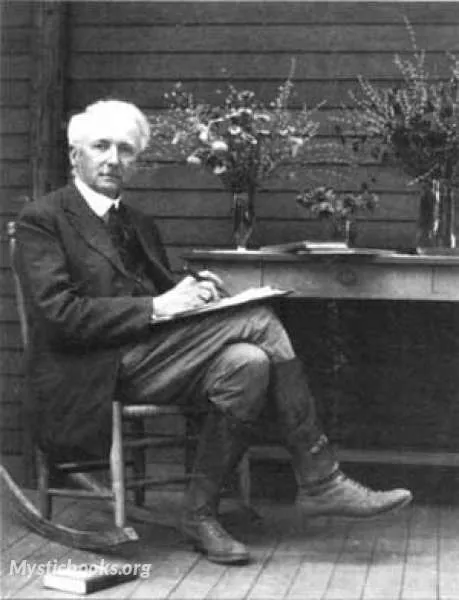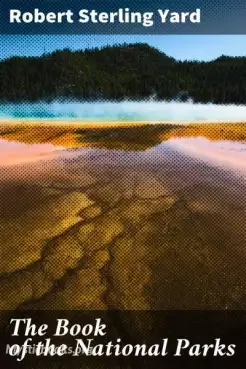
Timeline
Title
Country/Nationality
Robert Sterling Yard
Robert Sterling Yard was an American writer, journalist, and wilderness activist. Born in Haverstraw, New York, Yard graduated from Princeton University and spent the first twenty years of his career in the editing and publishing business. In 1915, he was recruited by his friend Stephen Mather to help publicize the need for an independent national park agency. Their numerous publications were part of a movement that resulted in legislative support for a National Park Service (NPS) in 1916. Yard served as head of the National Parks Educational Committee for several years after its conception, but tension within the NPS led him to concentrate on non-government initiatives. He became executive secretary of the National Parks Association in 1919.
Yard worked to promote the national parks as well as educate Americans about their use. Creating high standards based on aesthetic ideals for park selection, he also opposed commercialism and industrialization of what he called "America's masterpieces". These standards subsequently caused discord with his peers. After helping to establish a relationship between the NPA and the United States Forest Service, Yard later became involved in the protection of wilderness areas. In 1935, he became one of the eight founding members of The Wilderness Society and acted as its first president from 1937 until his death eight years later. Yard is now considered an important figure in the modern wilderness movement.
Robert Sterling Yard was born in 1861 in Haverstraw, New York to Robert Boyd and Sarah (Purdue) Yard. After attending the Freehold Institute in New Jersey, he graduated from Princeton University in 1883. Known throughout his life as "Bob", he became a prominent member of Princeton's Alumni Association, and founded the Montclair Princeton Alumni Association. In 1895, he married Mary Belle Moffat; they had one daughter, Margaret.
During the 1880s and 1890s, Yard worked as a journalist for the New York Sun and the New York Herald. He served in the publishing business from 1900 to 1915, variously as editor-in-chief of The Century Magazine and Sunday editor of the New York Herald. After serving as editor of Charles Scribner's Sons' the Book Buyer, Yard helped launch the publishing firm of Moffat, Yard and Company. He served as vice president and editor-in-chief of the firm.
In 1915, Yard was invited to Washington, D.C. by his friend Stephen Mather, who had started working on national parks as assistant to the Secretary of Interior. Yard and Mather had met while working for the New York Sun and became friends; Yard was the best man at Mather's wedding in 1893.
Mather, who wanted someone to help publicize the need for an independent agency to oversee the national parks movement, personally paid Yard's salary from his independent income. The United States had authorized 14 parks and 22 monuments over the previous forty years (1872–1915), but there was no single agency to provide unified management of the resources. In addition, some resources were managed by political appointees without professional qualifications. Together Mather and Yard ran a national parks publicity campaign for the Department of the Interior, writing numerous articles that praised the scenic qualities of the parks and their possibilities for educational, inspirational and recreational benefits. The unprecedented press coverage persuaded influential Americans about the importance of national parks, and encouraged Congress to create an independent parks agency.
Yard's most successful publicity initiative during this time was the National Parks Portfolio (1916), a collection of nine pamphlets that—through photographs interspersed with text lauding the scenic grandeur of the nation's major parks—connected the parks with a sense of national identity to make visitation an imperative of American citizenship.
Yard and Mather's publicity and lobbying resulted in the creation of the National Park Service; on August 25, 1916, President Woodrow Wilson signed a bill establishing the agency "to conserve the scenery and the natural and historic objects and wild life therein, and to provide for the enjoyment of the same in such manner and by such means as will leave them unimpaired for the enjoyment of future generations."
Yard believed that while the National Park Service was effective as a government agency, it was not capable of promoting the wishes of the common American. He wrote in June 1918 that the national park movement must "be cultivated only by an organization of the people outside the government, and unhampered by politics and routine". On May 29, 1919, the National Parks Association (NPA) was officially created to fill this role. Yard, who became a pivotal figure in the new society, was elected its executive secretary. His duties as the only full-time employee of the NPA were practically the same as they had been with the NPS—to promote the national parks and to educate Americans about their use. In its early years, the NPA was Yard's livelihood and passion: he recruited the key founding members, raised money and wrote various press releases Yard also served as editor of the NPA's National Parks Bulletin from 1919 to 1936. In the first issue, Yard outlined the organization's objectives in order to craft a broad educational program: not only would they attract students, artists and writers to the parks, but a "complete and rational system" would be created and adhered to by Congress and the Park Service.
While ill from pneumonia at the end of his life, he ran the society's affairs from his bed. He died on May 17, 1945, at the age of 84.
Books by Robert Sterling Yard

The Book of the National Parks
Robert Sterling Yard was an American writer, journalist, and wilderness activist. Born in Haverstraw, New York, Yard graduated from Princeton University and spent the first twenty years of his career in the editing and publishing business. In 1915, h...